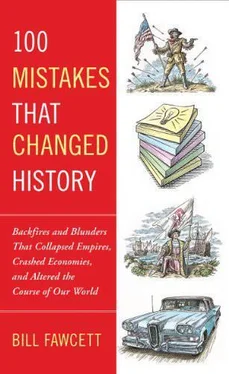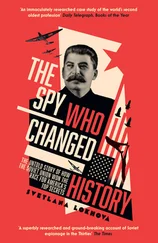Things started well with three corps of Hooker’s army crossing both the Rappahannock River and Rapidan River undetected. Within a day, the Army of the Potomac began to concentrate at Chancellorsville. That placed it in a position to attack Fredericksburg. Lee met this threat by leaving a small force, under Jubal Early, in Fredericksburg and moving to meet Hooker with most of his army. Hearing that Lee was approaching, Hooker halted and prepared to meet him. The plan was to wait until attacked and then move unengaged units to stop or flank the Army of Virginia. This was ceding the initiative to the Southern commander.
This might have worked for Hooker if his primary means of communications had not broken down almost from the start. He had begun the battle with machines that were supposed to allow him instant communications with his commanders. But his Beardslee telegraphs very quickly either ceased to work at all or sent unintelligible messages. This left the Union Army with only signal flags and couriers for getting information to and from its spread-out commanders. But most of those commanders had correctly realized that the Southern soldiers were reading their signals, so they refused to use the flag semaphores. With Lee approaching and Hooker’s communications collapsed, it is not surprising that Hooker was worried. He had been given the expectation of leading a carefully controlled defense; instead he found himself shadowboxing in an information blackout.
Just at the point where Jackson was turning his flank, Hooker could get information only by courier. By the time he was notified of the flank attack, entire regiments were retreating. When Jackson’s troops smashed the Union XI Corps, Hooker wrongly concluded that Lee had somehow outnumbered him by two to one. It is easy to see bogeymen everywhere when you are being kept in the dark. Simply put, for a variety of reasons, General Fighting Joe Hooker was losing his nerve. The next day, the Confederate forces attacked both of Hooker’s flanks. He withdrew to a defensive position and by the next day he was back across the rivers to where the Army of the Potomac had started, leaving thousands of dead and captured behind.
Fighting Joe Hooker’s army lost the Battle of Chancellorsville because their commander lost his nerve. The flank attack and holding action make this one of Robert E. Lee’s most brilliant battles. But Hooker’s failure was certainly helped by what was one of the Union Army’s first, but hardly the last, technological failures in battle. Incidentally, the Union never again trusted or used in battle the Beardslee telegraph.
53. GETTING CARRIED AWAY COSTS THE WAR
A Ride Too Far
1863
The Confederacy needed a dramatic victory. There had been some serious losses in the west, but the larger Union Army had been kept at bay in Virginia. What was needed in June 1863 was a victory that showed that the South could not only defend itself but could take the war into the North. They needed to show that they had some chance of actually winning the war, not just holding on longer. This would provide the impetus for England and France to recognize them as a nation. Then the European navies would break the Union blockade, and it would be a whole new war. Robert E. Lee’s decision to take the Army of Virginia north into Pennsylvania was a political, not a military, one. But this one mistake started a series of events that had the opposite effect. It ultimately doomed the Confederate cause because of very uncharacteristic mistakes he made near a small town named Gettysburg.
The mistake came about because the Gray Ghost, irregular cavalry commander John Mosby, sneaked into the center of the Union Army and came away with a copy of their current plans. What the plans showed was that there were gaps in the Union positions that could be exploited by J. E. B. Stuart’s cavalry. This took place at the beginning of what was one of Lee’s most audacious maneuvers: invading Pennsylvania. It was the job of Civil War cavalry to protect the supply lines of their army and disguise (cover) its movements. At the same time, they had to disrupt the supplies and report the movements of the enemy forces. While the Union cavalry had markedly improved, because of their confidence and courage the Confederate mounted army was still a very dominant force.
Unquestionably one of the most daring leaders of the Southern cause was J. E. B. (Jeb) Stuart. Time and again his raids and other exploits had earned him accolades from his commanders and respect from both sides of the war. Mosby finished his formal report to Lee on what he had found with the recommendation that the best way to protect Lee’s communications was to assail Hooker’s own supply lines. (General Joe Hooker was then in command of the Army of the Potomac.) In response, Stuart presented a plan to General Lee that involved a raid by a large part of his command, effectively a majority of the cavalry of the Army of Virginia. They would move behind the Yankee forces and to nearby Washington, D.C. Stuart was sure that this would, as it had in the past, create a panic that forced most of the Union horses to pull back and chase him, and likely force thousands of blue-clad infantry who might otherwise face Lee to stand on the defensive to protect the Union capital.
A lot of people blame the absence of Stuart’s cavalry before and for the first days of Gettysburg for there being a battle there at all. In the recriminations after the war, some said that Stuart was more interested in headlines and raiding than in doing his job. This was not really the case. Stuart’s plan to ride around much of the Union Army appealed to Lee, who sent General Longstreet, Stuart’s direct commander, a note expressing his conditional approval. This order from Lee read that if Stuart could get across the Potomac River without alerting the Federals to Lee’s plan to strike North into the Shenandoah Valley, he should do so. While the Confederate cavalry was waiting to cross into Pennsylvania, Stuart received orders to that effect from Robert E. Lee on June 23. These read in part:
If General Hooker’s army remains inactive, you can leave two brigades to watch him, and withdraw with the three others, but should he not appear to be moving northward, I think you had better withdraw this side of the mountain tomorrow night, cross at Shepherdstown next day, and move over to Fredericktown.
You will, however, be able to judge whether you can pass around their army without hindrance, doing them all the damage you can, and cross the river east of the mountains. In either case, after crossing the river, you must move on and feel the right of Ewell’s troops.
The result of this order was that Stuart and most of his cavalry were missing for the first days of the Battle of Gettysburg. As a consequence, Lee had virtually no intelligence as to the location of the Army of the Potomac before the battle. But Stuart was not AWOL, gallivanting on his own; he was in obedience to Lee’s direct order. So mistake number one has to be Lee’s willingness to send off most of his horsemen just as he was beginning to move into hostile territory. His intent in doing so, distraction and forcing the withdrawal of Union troops to defend against the raiders, was valid. Whether that was more important than the less glorious role of gathering intelligence is what we are judging here. Since the real goal of moving North was to demonstrate to the European nations the strength and viability of the Confederacy, the publicity of such a raid combined with a victory against a portion of the Union Army would have been doubly beneficial. So perhaps this was a worthy risk, but the devil is in the details.
Stuart actually left behind more than half of his mounted command. The risk came from the fact that with nearly half the mounted strength of his army gone, Lee had just enough horsemen to cover his own movements. He did not have enough to also maintain reliable information on the many Union corps that were moving, under Hooker and then Meade, to intercept his army.
Читать дальше












